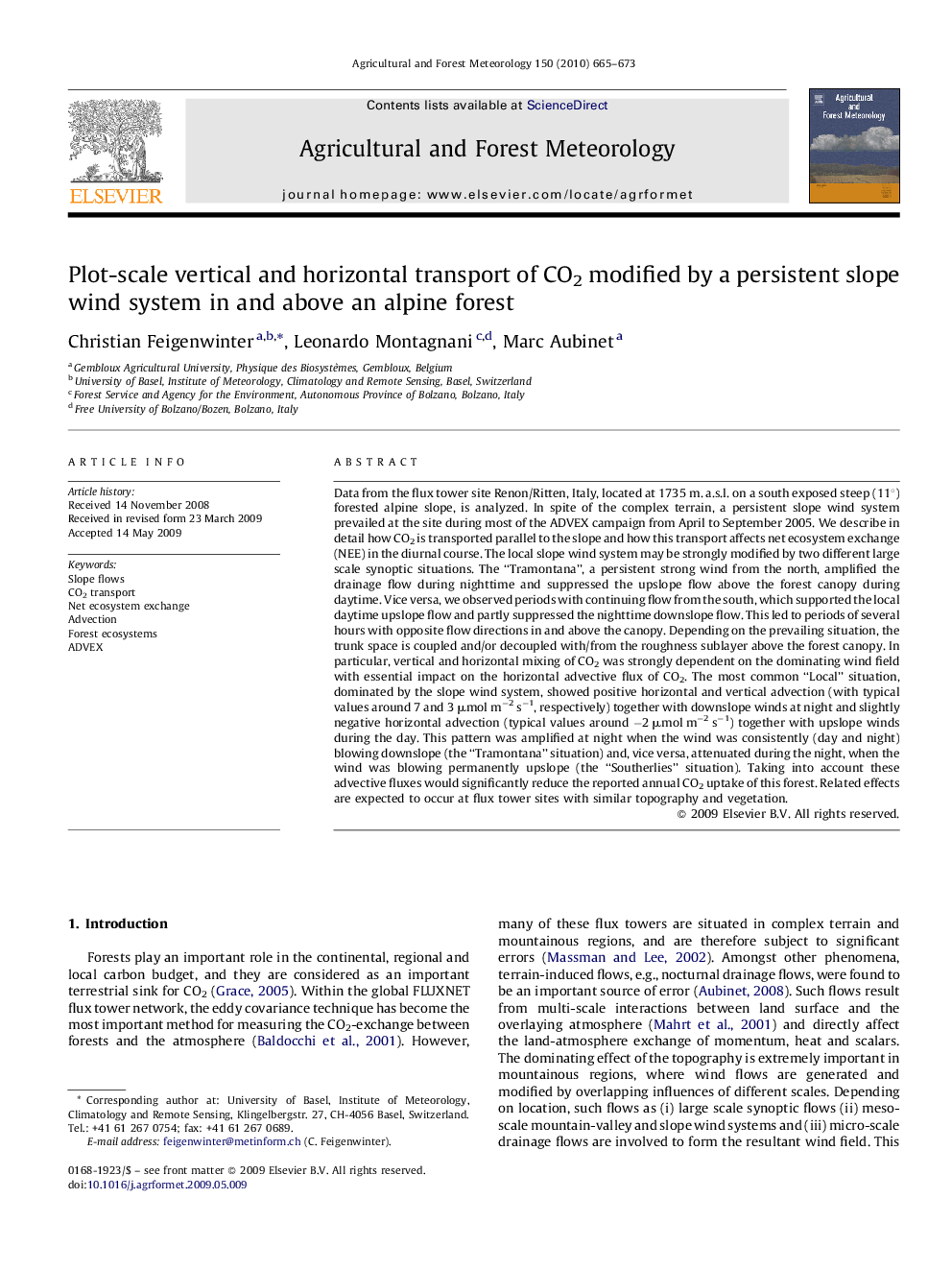| کد مقاله | کد نشریه | سال انتشار | مقاله انگلیسی | نسخه تمام متن |
|---|---|---|---|---|
| 82249 | 158385 | 2010 | 9 صفحه PDF | دانلود رایگان |

Data from the flux tower site Renon/Ritten, Italy, located at 1735 m. a.s.l. on a south exposed steep (11°) forested alpine slope, is analyzed. In spite of the complex terrain, a persistent slope wind system prevailed at the site during most of the ADVEX campaign from April to September 2005. We describe in detail how CO2 is transported parallel to the slope and how this transport affects net ecosystem exchange (NEE) in the diurnal course. The local slope wind system may be strongly modified by two different large scale synoptic situations. The “Tramontana”, a persistent strong wind from the north, amplified the drainage flow during nighttime and suppressed the upslope flow above the forest canopy during daytime. Vice versa, we observed periods with continuing flow from the south, which supported the local daytime upslope flow and partly suppressed the nighttime downslope flow. This led to periods of several hours with opposite flow directions in and above the canopy. Depending on the prevailing situation, the trunk space is coupled and/or decoupled with/from the roughness sublayer above the forest canopy. In particular, vertical and horizontal mixing of CO2 was strongly dependent on the dominating wind field with essential impact on the horizontal advective flux of CO2. The most common “Local” situation, dominated by the slope wind system, showed positive horizontal and vertical advection (with typical values around 7 and 3 μmol m−2 s−1, respectively) together with downslope winds at night and slightly negative horizontal advection (typical values around −2 μmol m−2 s−1) together with upslope winds during the day. This pattern was amplified at night when the wind was consistently (day and night) blowing downslope (the “Tramontana” situation) and, vice versa, attenuated during the night, when the wind was blowing permanently upslope (the “Southerlies” situation). Taking into account these advective fluxes would significantly reduce the reported annual CO2 uptake of this forest. Related effects are expected to occur at flux tower sites with similar topography and vegetation.
Journal: Agricultural and Forest Meteorology - Volume 150, Issue 5, 15 May 2010, Pages 665–673